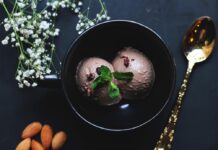Do you make herbal teas? Do you season your food with fresh herbs? Do you collect them fresh? If you are keen on herbs in your home “first aid kit” or kitchen, then the herbalist’s and chef’s observations will be interesting reading.
Monika Čechová Golasovská, the herbalist, starts with a fact that promotes our connection with nature. According to research, a two-and-a-half-hour stay in nature boosts our immune system by 30%. “The herbs are a powerful natural resource. We can use them in the form of infusions, teas, and tinctures. The minerals and vitamins they contain work to prevent various health problems. Mushrooms even contain natural polysaccharides and act as natural stimulants for the immune system. Beta-glucans can help shorten the duration of infections and provide relief.”
The herbalist also reminded us of the golden rule that we should collect only what we know well and as much as we need.
Monika considers nettle a universal herb in the “herbal medicine cabinet. “It has a great ability to cleanse the body. When tired, it supplies iron and helps with colds or allergies. We can use it in case of urinary tract inflammation, gallbladder or liver diseases.”
The flowers of linden and elderberry can help with fever and cold. Dandelion has powerful roots, which, when dried, can help cleanse the body and alleviate digestive problems. “Take dried mallow and mallow blossom tea with wild thyme, thyme, or Plantago when suffering from cough.”
The herbalist also mentioned drops made from young spring oak bark. They disinfect wounds, bites, and oral herpes perfectly. You can also use them for toothaches, gums, or swollen tonsils. In addition, you will also find St. John’s wort oil beneficial for healing wounds or burns, as well as for massages.
If you’d rather gather fresh herbs from the forest, Monika has some tips for you. She advises only picking herbs in sunny weather and suggests that roots are best harvested from the ground in the fall. Monika also recommends not rinsing the roots with hot water and not peeling the top part, as that’s where the most active ingredients are located.
The herbalist also recalled the somewhat “magic” of the moon phases. When the moon is waxing, the overground parts are best for harvest. When the moon is waning, go to the roots and root stalks. After the herbs rest in a dry and dark place and are dried to their still preserved color, we store them in the same conditions. “Do not combine them into different blends; always prepare the herbal mixture directly as needed.”
Chefs are skilled at working with herbs. According to chef Andrej Turček, spices enhance a dish not only with taste but also with aroma. “Herbs have a different taste when dried or fresh. Some herbs, like oregano, have a stronger aroma after drying. I mainly use sage, basil, thyme, mint, tarragon, coriander, rosemary, chives, and dill.”
According to Turček, dill and coriander are specific herbs that people simply love or hate. “When I first tasted coriander, it was not a pleasant taste for me. I felt like I was eating a detergent. Over time, I got used to the taste, and today, I love it. I have eaten dill since I was a child; my grandmothers used it in thick sauces and soups.”
“Turček also shared a simple recipe for making herbal oils with a strong herb flavor. We heat neutral oil, such as rapeseed, to 70°C and add chives. After blending it until smooth, we strain it through gauze. It’s important to cool the oil immediately to preserve the color.”
Text: Eva Vašková, photos: Pexels

















